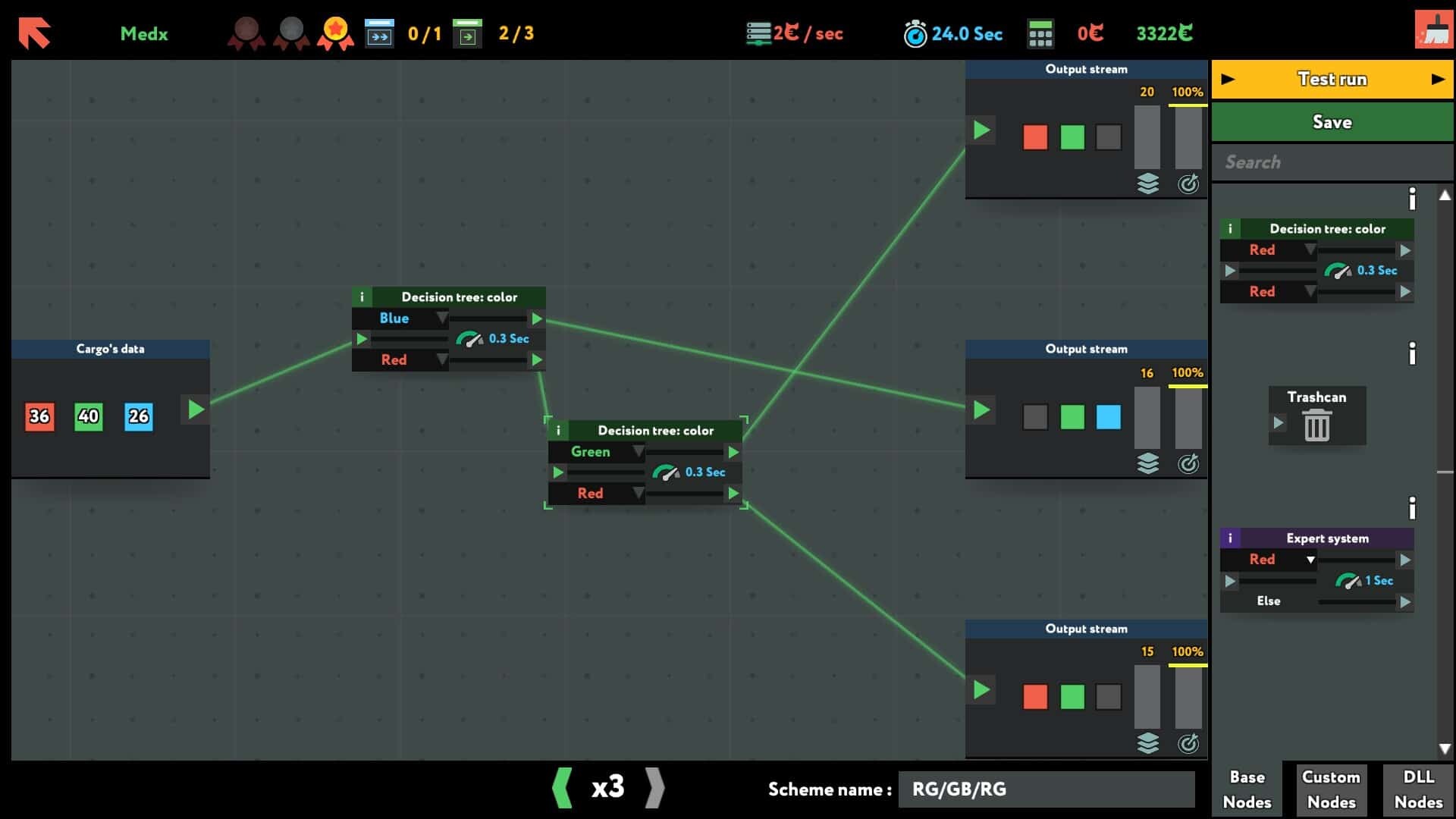
And if your solvers are busy, then your system backs up and stops working and now you need to split the input into multiple of the same smaller systems to ensure that your solvers are working near enough non-stop to complete in the allotted time. This will likely send your block to the wrong output - but your decision as a machine learning engineer is to question whether the time and cost factors of adding another solver into the mix after that is of enough benefit to the final accuracy of the system you’ve created, or do you leave it and accept the inaccuracies?įurther adding difficulty to the mix, is that the solvers themselves take a certain amount of time to complete. An example from one of the earlier levels, is that the solver block you are given will send an item to the output with the lowest error level, even if that output isn’t an exact match for what it was given.
#WHILE TRUE GAME SIMULATOR#
The difficulty ramps up when the game starts adding different shapes into the mix, and then combining the two elements for even greater complexity requirements for sorting them into the right areas.īecause this is a machine learning simulator - rather than a functional programming game like Human Resource Machine for instance, there’s an acceptable level of inaccuracy allowed for completing a level. Initially, this starts out pretty simple with taking simple inputs of different coloured blocks, and being told to output them to areas that want only red or green blocks, for instance.


While True: learn() is the latest game from developer Luden.io in which you are simulating the life of a machine learning engineer by combining different variations of “solvers” together to create a network that sets out to solve a particular problem. Previews // 5th May 2018 - 4 years ago // By Steven John Dawson while True: learn() Preview


 0 kommentar(er)
0 kommentar(er)
